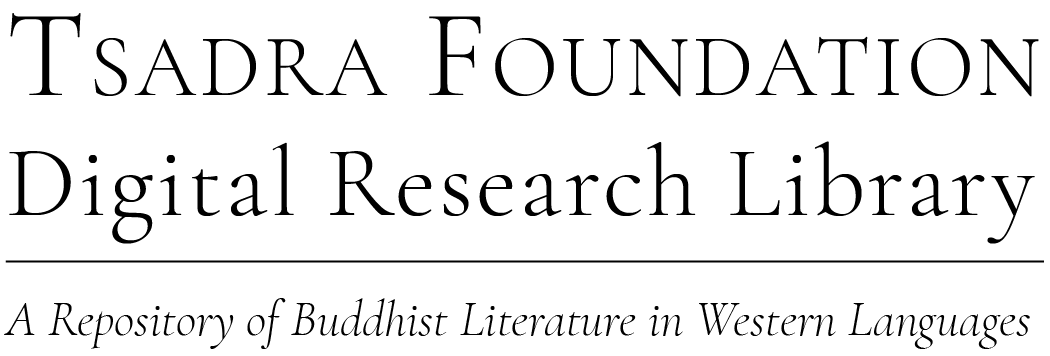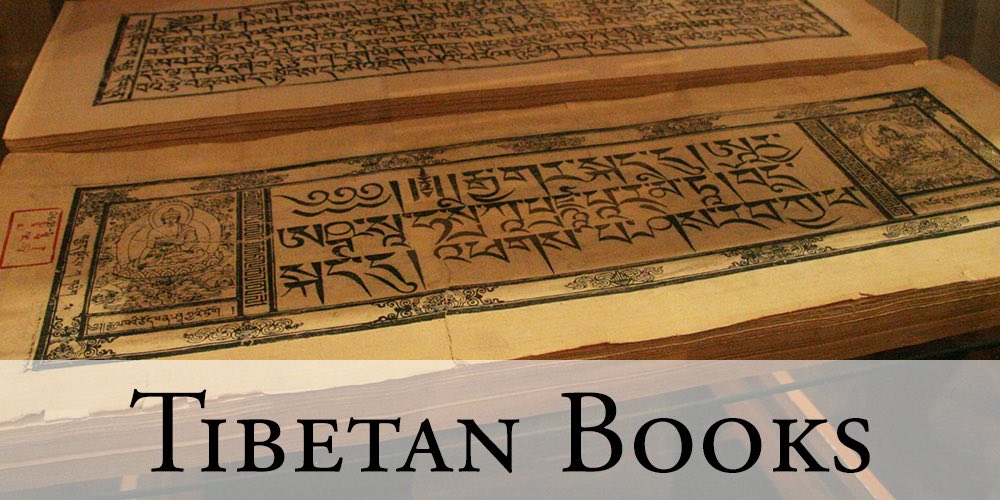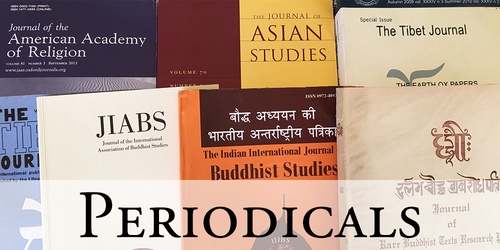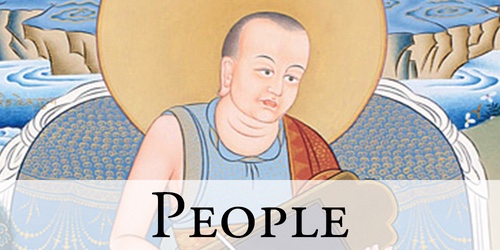Main Page
Featured Books
Zhije: The Pacification of Suffering
Chod - The Sacred Teachings on Severance
The Complete Nyingma Tradition from Sutra to Tantra, Book 13
Finding Rest in the Nature of the Mind
Staff Picks
A Revolutionary Artist of Tibet
Another beautifully printed art book from the Rubin Museum including the excellent scholarship of David Jackson. "Published in conjunction with an exhibition organized and presented by the Rubin Museum of Art, New York, September 5, 2014 through February 2, 2015....David Jackson focuses on the Khyenri style, the least known among the three major painting styles of Tibet, dating from the mid-fifteenth through the seventeenth century. The painting of Khyentse Chenmo, the founder of the Khyenri style who flourished from the 1450s to the 1490s, was significant for his radical rejection of the prevailing, classic Indic (especially Nepalese-inspired) styles with formal red backgrounds, enthusiastically replacing them with the intense greens and blues of Chinese landscapes. Jackson also brings to light several of Khyentse's paintings in museums outside Tibet, including some that have been unrecognized for over a century." (Source)
The Six Lamps
The Instructions on the Six Lamps is a profound and important work from the Bön Dzogchen tradition and is one of the root texts of the Zhangzhung Nyengyü (Oral Transmission of Zhangzhung) series of orally transmitted teachings. Considered to be the central work of the inner cycle of these teachings, it expertly details the principles of the natural state and its visionary marvels. The root text describes highly secret precepts of Dzogchen (Great Perfection) practice—the teachings of Trekchö and Thögel—as revealed by Tapihritsa to Gyerpung Nangzher Löpo.
The teachings in this text represent oral instructions transmitted by a single master to a single disciple in the mode known as “single transmission.” It is through such a practice that one can see the clear light of one’s own mind before achieving complete buddhahood. In this respect, the text contains a complete teaching of Dzogchen, from beginning to end. (Source: Wisdom Publications)
Grains of Gold
In 1941, philosopher and poet Gendun Chopel (1903–51) sent a large manuscript by ship, train, and yak across mountains and deserts to his homeland in the northeastern corner of Tibet. He would follow it five years later, returning to his native land after twelve years in India and Sri Lanka. But he did not receive the welcome he imagined: he was arrested by the government of the regent of the young Dalai Lama on trumped-up charges of treason. He emerged from prison three years later a broken man and died soon after.
Gendun Chopel was a prolific writer during his short life. Yet he considered that manuscript, which he titled Grains of Gold, to be his life’s work, one to delight his compatriots with tales of an ancient Indian and Tibetan past, while alerting them to the wonders and dangers of the strikingly modern land abutting Tibet’s southern border, the British colony of India. Now available for the first time in English, Grains of Gold is a unique compendium of South Asian and Tibetan culture that combines travelogue, drawings, history, and ethnography. Gendun Chopel describes the world he discovered in South Asia, from the ruins of the sacred sites of Buddhism to the Sanskrit classics he learned to read in the original. He is also sharply, often humorously critical of the Tibetan love of the fantastic, bursting one myth after another and finding fault with the accounts of earlier Tibetan pilgrims. Exploring a wide range of cultures and religions central to the history of the region, Gendun Chopel is eager to describe all the new knowledge he gathered in his travels to his Buddhist audience in Tibet.
At once the account of the experiences of a tragic figure in Tibetan history and the work of an extraordinary scholar, Grains of Gold is an accessible, compelling work animated by a sense of discovery of both a distant past and a strange present. (Source: University of Chicago Press)
Strange Tales of an Oriental Idol
We tend to think that the Buddha has always been seen as the compassionate sage admired around the world today, but until the nineteenth century, Europeans often regarded him as a nefarious figure, an idol worshipped by the pagans of the Orient. Donald S. Lopez Jr. offers here a rich sourcebook of European fantasies about the Buddha drawn from the works of dozens of authors over fifteen hundred years, including Clement of Alexandria, Marco Polo, St. Francis Xavier, Voltaire, and Sir William Jones.
Featuring writings by soldiers, adventurers, merchants, missionaries, theologians, and colonial officers, this volume contains a wide range of portraits of the Buddha. The descriptions are rarely flattering, as all manner of reports—some accurate, some inaccurate, and some garbled—came to circulate among European savants and eccentrics, many of whom were famous in their day but are long forgotten in ours. Taken together, these accounts present a fascinating picture, not only of the Buddha as he was understood and misunderstood for centuries, but also of his portrayers. (Source: University of Chicago Press)
Translations from 2020
Jonang: The One Hundred and Eight Teaching Manuals
Les Systèmes Philosophiques Bouddhistes (Charrier 2020)
Translations from 2019
A Commentary on Shantideva's Engaging in the Conduct of the Bodhisattvas
Brilliantly Illuminating Lamp of the Five Stages (2019)
Buddha Mind - Christ Mind
Buddha Nature Reconsidered - Vol 2
Illumination of the Hidden Meaning Part 2
Newly Added: Books
Forms of Awakening
Transmission and Tradition (2022)
Adhyardhaśatikā Prajñāpāramitā: Sanskrit and Tibetan Texts
Newly Added: Tibetan Publications
Gangs can bod chen po'i rgyal rabs 'dus gsal du bkod pa sngon med dwangs shel 'phrul gyi me long (Shechen 2025)
Snga 'gyur rdo rje theg pa gtso bor gyur pa'i sgrub brgyud shing rta brgyad kyi byung ba brjod pa'i mdor bsdus legs bshad pad+ma dkar po'i rdzing bu (Shechen 2025)
Dbu ma rgyan gyi rnam bshad 'jam dbyangs bla ma dgyes pa'i zhal lung (Shechen 2025)
Grub thob karma gling pa'i zab gter zab chos zhi khro dgongs pa rang grol gyi chos 'khor - Vol. 2
Grub thob karma gling pa'i zab gter zab chos zhi khro dgongs pa rang grol gyi chos 'khor - Vol. 1
Grub thob karma gling pa'i zab gter zab chos zhi khro dgongs pa rang grol gyi chos 'khor - Vol. 3
Kun mkhyen rong zom chos kyi bzang po'i gsung 'bum phyogs bsgrigs (Shechen 2025)
Grub thob karma gling pa'i zab gter zab chos zhi khro dgongs pa rang grol gyi chos 'khor (Shechen 2025)
Newly Added: Articles
Śāntideva's Introduction to the Practices of Awakening (Bodhicaryāvatāra) (Oxford Encyclopedia)
Two Concepts of Meditation and Three Kinds of Wisdom in Kamalasila’s Bhavanakramas
Why is Newar Buddhism Largely Ignored in Buddhist Studies? Protestantism, the Narrative of Decline, and the Position of Invisibility
The Mirror Clarifying the Results of Karma: A Narrative Commentary on the Bodhisattvacaryāvatāra
The Wheel-Like Path: Atiśa Dīpaṃkara Śrījñāna's Commentary on The Way of the Bodhisattva
Changing Interpretations of Meditation in the Bodhicaryāvatāra: Meditation and the Concept of the Equality of Self and Other
On Sanskrit Prosody – An Interview with Prof. Kashinath Nyaupane
The Kadampa: A Formative Movement of Tibetan Buddhism
Newly Added: Dissertations
Transgression, Conversion, Reformation: Atiśa Dīpaṃkara and Tantric Hermeneutics in the Later Propagation of Tibetan Buddhism
An Early Tibetan Perspective on the Hermeneutical Scheme of the Three Wheels of Dharma: The Case of 'Jig-rten gsum-mgon and the Early Exponents of the dGongs gcig
Sakya Paṇḍita's Ritual for Generating the Mind According to the Madhyamaka Tradition (dbu ma lugs kyi sems bskyed kyi cho ga) (Chao 2023)
Newly Added: Periodical Issues
Revue d'Etudes Tibétaines/Vol. 75 (2025)










